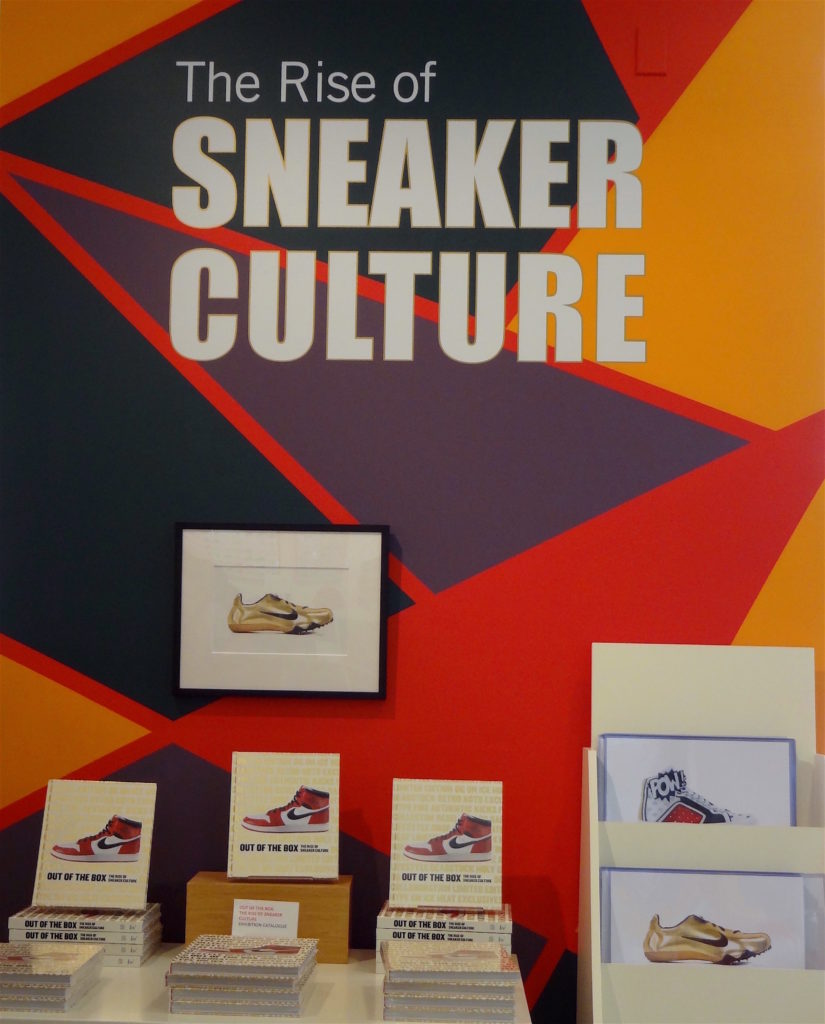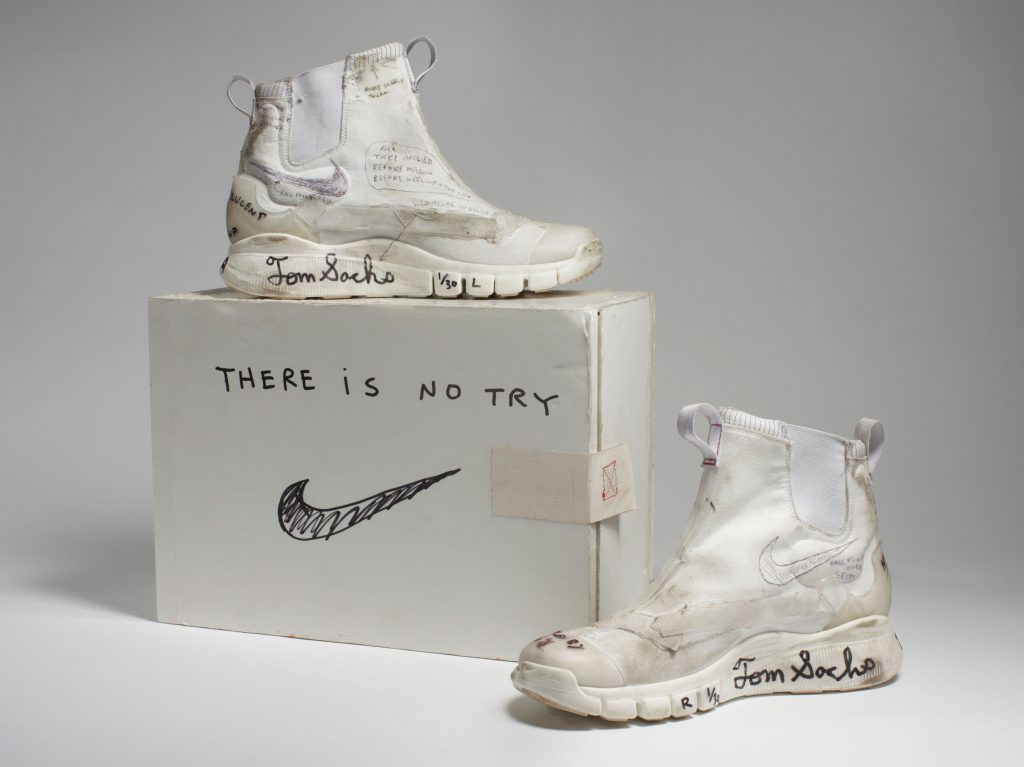The High Museum’s “The Rise of Sneaker Culture”: 200 years of sneaker history

“The Rise of Sneaker Culture,” on view at the High Museum until Sunday, August 14, is the museum’s latest fashion-themed exhibition, following the success of their Iris Van Herpen display. The travelling exhibition is the first of its kind in the United States.
For those who feel mere sneakers aren’t deserving of their own exhibition, the global footwear industry brought in almost $200 billion in revenue in 2015, making it a worthy, if still unusual, choice. The exhibition also features sneaker collaborations with Chanel, Prada, Louis Vuitton, Jeremy Scott and many more.
From rare collectibles of the 1830’s to modern-day Nike’s, the exhibition contains around 150 different pairs of sneakers. What makes the exhibition even more appealing is that, while many of the sneakers are famous worldwide, a sizeable number were generously donated by private collectors for the duration of the exhibition, many of which have never been seen by the public.
A few notable sneakers on display include the very first Michael Jordan collaboration, the Nike Air Jordan I, which soared in popularity instantaneously. The shoes, banned by the NBA in 1985 because they were in opposition to the league’s uniform policy, became instantly associated with rebellion. Michael Jordan wore the basketball shoes on the court every game, defying the NBA and was slapped with a $5,000 fine every time he did so (which of course Nike paid for).
The NikeCraft Lunar Underboot Aeroply Experimentation Research Boot Prototype is another unique pair up for display. Created by artist Tom Sachs for Nike, this was an odd collaboration considering Sachs’ opposition to mass consumerism and factory-made, mass-produced products. Shunning the norm of designing for athletes in mind, Sachs took inspiration from NASA. The shoes retain an artisan, handcrafted feeling while still being mass-produced and are made from the same material as the airbags on the Mars excursion Rover were, in addition to Nike Special Forces outsoles.

Whites (Original), 2008-12
Collection of the artist
Courtesy American Federation of Arts
The oldest of the bunch is a pair of pre-vulcanized rubber overshoes, a far cry in appearance from what we think of as the traditional sneaker today. Made in the 1830’s, these sneakers were considered to be a luxury item solely for the wealthy. At the time, rubber was so rare that shoes made of the precious material cost five times more than sneakers made of leather, the then-worn shoes of athletes. However, the expensive pre-vulcanized rubber wasn’t practical or durable. Their extreme temperature sensitivity meant that they would melt in the heat and become fragile and brittle in the cold. These issues led Western scientists to search for a solution by creating a rubber that was cheaper, marketable to the public and less sensitive to outside factors. This eventually led to the creation of the rubber-soled sneakers we know today.
Sneaker Fun Fact: The term “sneakers” wasn’t used for rubber-soled shoes until the Great Depression, when it was reported that this type of shoe allowed for thieves to sneak up on their targets without being heard.
These are just a few of the many unique offerings in the exhibition currently on display at the High Museum. Whether you love the fashion sneaker trend sweeping the nation, are dying to see every pair of Air Jordans ever made or simply want to see a pair of Kanye West’s Yeezys, the exhibition is a worthwhile look at the history of sneakers and how the politics and culture of the time influenced them.
























